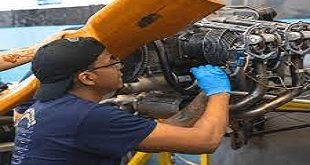Wolseley is a memorable English car and designing organization that was initially established in 1887 as the Wolseley Sheep Shearing Machine Organization. The organization differentiated into the development of bikes, cruisers, and at last autos. Wolseley became one of the main vehicle makers in the mid twentieth hundred years, known for delivering quality vehicles.
The introduction of methods for mass production is one of Wolseley’s most notable contributions to the automobile industry. Herbert Austin, who later established the Austin Motor Company, was the managing director of Wolseley and was instrumental in putting assembly line techniques into practice.
In 1927, Wolseley became a part of the Morris Motor Company, establishing the Morris organization’s foundation. The Morris organization, thusly, in the long run turned out to be essential for the English Engine Enterprise (BMC) in 1952.
The Wolseley brand was used for a variety of models throughout the years, but as the automotive industry continued to consolidate, the Wolseley marque eventually vanished. The brand is presently connected more with its authentic importance in the improvement of the auto business in the Assembled Realm.
Wolseley’s Evolution:
Wolseley’s process started in the late nineteenth 100 years, at first zeroing in on sheep shearing machines. Nonetheless, under the initiative of Herbert Austin, the organization enhanced into bikes and cruisers prior to making a crucial shift to cars. Wolseley’s influence on the burgeoning automotive industry began with this transition.Herbert Austin’s residency at Wolseley was set apart by creative reasoning that would later upset the auto business. Drawing motivation from American sequential construction system strategies, Wolseley turned into a pioneer in the effective large scale manufacturing of cars. The brand’s rise to prominence in the early 20th century was facilitated by this dedication to innovation.
Advancements in Large scale manufacturing:
In particular in the field of mass production, Herbert Austin’s time as managing director of Wolseley was marked by ground-breaking innovations. Drawing motivation from American mechanical production system techniques, Wolseley turned into a trailblazer in executing proficient assembling processes. The foundation for future developments in the automotive sector was laid by this strategy.
Notable Models:
Wolseley delivered a scope of notorious models that caught the creative mind of vehicle fans. From exquisite vehicles to vigorous roadsters, Wolseley vehicles were known for their quality craftsmanship and unmistakable plan. The brand’s obligation to greatness gathered a steadfast following, making Wolseley a noticeable name in the auto world.
Consolidation and Combination:
In 1927, Wolseley turned out to be essential for the Morris Engine Organization, framing the groundwork of the Morris association. This consolidation ultimately added to the arrangement of the English Engine Organization (BMC) in 1952. While Wolseley kept on creating vehicles under its name, the brand’s personality turned out to be progressively entwined with the more extensive scene of English car history.
Inheritance and Legacy:
However the Wolseley brand has blurred from contemporary auto creation, its heritage perseveres through its effect on the early car industry. Collectors and enthusiasts treasure vintage Wolseley automobiles because they represent an era when craftsmanship and innovation defined the driving experience.
The Golden Age of Wolseley:
Wolseley’s brilliant age in the auto world spread over from the late nineteenth 100 years to the mid-twentieth hundred years. The brand became inseparable from class, quality, and dependability. Exemplary models like the Wolseley 6/80 and the Wolseley Hornet displayed the brand’s obligation to craftsmanship and configuration, procuring an extraordinary spot in the hearts of vehicle fans.
Consolidation and Change:
In 1927, Wolseley converged with the Morris Engine Organization, establishing the groundwork for what might turn into the English Engine Partnership (BMC) in 1952. Wolseley’s identity became intertwined with the broader context of British automotive history while the brand continued to exist. The brand kept on delivering vehicles, each a demonstration of its celebrated past.Persevering through HeritageHowever Wolseley’s presence in the contemporary car scene has lessened, its heritage perseveres. Due to their design, craftsmanship, and historical significance, classic Wolseley automobiles remain prized collectibles. The brand’s influence on early methods of mass production and influence on the British auto industry have established its place in automotive history.
Legacy and Collectibility:
Today, “Wolseley Wheels” are something other than a bunch of tires; They are a legacy that continues to captivate automotive enthusiasts and collectors. Due to their timeless design, engineering prowess, and historical significance, classic Wolseley automobiles are sought after. The uncommonness of these vehicles adds to their appeal, making them valued belongings for the people who value the imaginativeness of past auto periods.Legacy of Wolseley
The legacy of Wolseley is saturated with the tradition of English car designing. From its starting points as the Wolseley Sheep Shearing Machine Organization in 1887 to its urgent job in the improvement of cars, Wolseley’s process is a demonstration of flexibility and development.
Mass Production Innovations:
Under Herbert Austin’s leadership, Wolseley was a pioneer in the adoption of mass production methods. Investigate how the brand’s obligation to proficiency and development made ready for progressions in the car producing process.
Traditional Wolseley Designs:
Venture through the brilliant period of Wolseley by investigating exemplary models that characterized a time. Whether it’s the Wolseley 6/80 or the Wolseley Hornet, each model addresses a part in the brand’s set of experiences, exhibiting tastefulness, execution, and immortal plan.
Consolidation and Industry Development:
A significant shift occurred when Morris Motor Company and Wolseley merged in 1927. Figure out how this consolidation added to the development of the English Engine Partnership (BMC) in 1952 and investigate Wolseley’s job in the more extensive scene of the English car industry.
Collectibility and Extraordinariness:
Uncover the charm of Wolseley vehicles as desired gatherer’s things. Investigate their unique case, authentic importance, and the developing local area of aficionados who appreciate and protect these exemplary autos.
British Automotive Heritage
The foundations of English Auto Legacy can be followed back to the trailblazers who really hoped for a future on wheels. From the beginning of imaginative designing to the foundation of notable brands, the English auto industry laid the basis for an inheritance that would shape the universe of motoring.Traditional British MarquesThe scene of English car legacy is enhanced with exemplary marques that have become inseparable from refinement and execution. From Rolls-Royce to Puma, each brand conveys a special story, mirroring the quintessential English mix of extravagance and designing ability.Ageless Plan FeelInvestigate the development of plan style that have separate English vehicles on a worldwide stage. From the smooth lines of one of a kind games vehicles to the refined style of extravagance cars, English car configuration has reliably caught the creative mind of fans around the world.
Excellence in Motorsport:
The thrilling world of motorsport is influenced by British automotive excellence’s long history. From the blessed grounds of Silverstone to the difficult circuits of the Isle of Man, English hustling legacy has created legends and famous minutes that reverberate with fans and drivers the same.Development and Innovative Headways v Jump into the tradition of development that has characterized the English auto industry. Whether it’s leap forwards in security, designing, or the hug of economical advancements, English automakers have reliably pushed the limits of what is conceivable out and about.
Iconic British Automobiles
Dive into the universe of Rolls-Royce, a brand that has set the norm for car extravagance. From the notorious Soul of Happiness to the rich insides, Rolls-Royce vehicles address the apex of craftsmanship and selectiveness. Investigate the tradition of Panther, a brand that has flawlessly mixed effortlessness, space, and speed. From the ageless E-Type to the advanced F-Type, Panther’s obligation to plan development and execution has made it a getting through image of English auto greatness. Discover Land Rover’s off-road legacy, an automaker that reimagined four-wheeled adventure. In the world of versatile and capable SUVs, Land Rover has established itself as an icon through its rugged Defender and luxurious Range Rover models. Follow the underlying foundations of the Smaller than usual, a conservative vehicle that changed metropolitan driving. The Mini has become a symbol of British motoring and a cultural icon that transcends generations thanks to its iconic design and agile performance. Step into the universe of Aston Martin, a brand that has caught the hearts of auto lovers as well as turned into the liked decision of the imaginary English government operative, James Bond. Aston Martin has established itself as a member of the automotive elite thanks to its combination of style and power. Witness the designing ability of Lotus, a brand famous for its lightweight and superior presentation sports vehicles. Lotus continues to push the boundaries of automotive innovation, from the illustrious Lotus Seven to the current Evora.
Wolseley conclusion
Wolseley Wheels: The book A Classic Chronicle of British Automotive Excellence” serves as a reminder of a time when vehicles were more than just means of transportation; they were also works of art and creativity. Wolseley’s excursion, from sheep shears to exemplary vehicles, is a demonstration of the persevering through tradition of a brand that made a permanent imprint on the rich embroidery of English car history.The exemplary Wolseley models, like the Wolseley 6/80 and the Wolseley Hornet, became images of style and craftsmanship. These vehicles graced the streets as well as added to the brand’s getting through inheritance.


